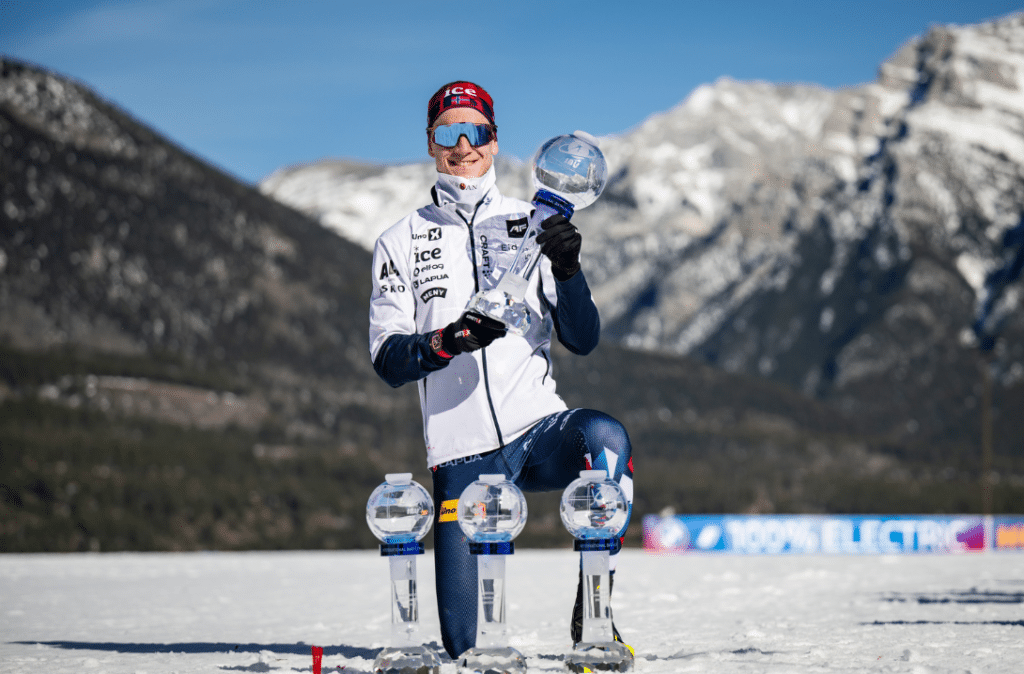Norway's men and France's women dominate the Biathlon World Cup
To be honest, these record figures from Norway and France are certainly a pleasure to read. While French television was able to celebrate a new record at the World Championships in Nove Mesto with 1.8 million viewers, the Scandinavians were delighted with a biathlon audience share of 80%, which means nothing more than that four out of five TV viewers opted for biathlon during the World Championships. Records were also broken in the digital sector, with user numbers now in the three-digit million range worldwide. Why? Because success is interesting!
There were successes to celebrate for some biathletes, for example Lisa Vittozzi from Italy won the overall women's World Cup. The Italian had already become World Champion in Nove Mesto, and Sweden's men's relay team also won the World Cup title. In the men's event, there were three individual World Cup victories for Germany and one for Sweden, while in the women's event, in addition to the strong Vittozzi with four victories, Switzerland's Lena Häcki-Groß also stood on the top step of the World Cup podium twice, while Elvira Oeberg from Sweden came out on top once.
And what else? All (!) other competitions this winter were won by men and women from either Norway or France. In the men's event, France's Eric Perrot was able to break into the Norwegian phalanx in Soldier Hollow. However, they won 15 of the 21 individual World Cups, with high-flyer Johannes Thingnes Boe alone, who once again collected the big crystal globe, being successful eight times. This is causing much joy in the Scandinavian camp and worry among the competition. And a little anxiety for the IBU, because the dominance of the men from Northern Europe could have had an impact on spectator interest, according to the motto: "They're going to win anyway". The figures above show that this was not the case. But even the Norwegians believe they still have room for improvement, and the fact that none of the relay teams won gold at the World Championships is a thorn in the side of those accustomed to success.

France's women were quite different. They delivered in a way that left the competition astonished, especially at the World Championships. Only Lisa Vittozzi was able to break into the French phalanx, taking the title in the individual competition, with Julia Simon and Justine Braisaz-Bouchet and the teams of Lou Jeanmonnot and Sophie Chauveau taking the rest. The quadruple victory in the sprint was probably the greatest expression of French dominance.
The victims of the superiority made in France were the competitors, including those from Norway. Before the world championships, Norway's Ingrid Landmark Tandrevold was considered the favorite. But what the men achieved was denied to the women. Tandrevold returned stronger than ever after her disappointment at the World Championships and celebrated a successful comeback in the World Cup in Oslo. However, she was unable to prevent the increasingly strong Vittozzi and France's Lou Jeanmonnot from overtaking her in the overall World Cup. This is why the overall result, which was finalized after the biathlon World Cup caravan's trip to America with starts in Soldier Hollow and Canmore, Canada, even reinforces the impression that a French-Norwegian season has come to an end.
That's why, at the end of the season, there's one more figure that, for once, has nothing to do with Norway and France. An impressive 4.69 million people - another record - watched the men's mass start race on the final day of the World Championships, only three hundred thousand fewer had watched the women's race. Impressive figures from the German market. At least in terms of absolute numbers, Germany was ahead.
Pictures: K. Voigt Fotografie

